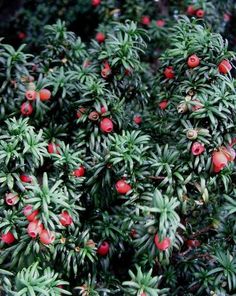Laurus nobilis, commonly known as Bay Laurel or Sweet Bay, is an evergreen tree or large shrub native to the Mediterranean region. It is widely cultivated for its aromatic leaves, which are commonly used as a culinary herb. Here are key features and information about Laurus nobilis:
Key Characteristics:
Leaves:
The leaves of Laurus nobilis are leathery, dark green, and have a lanceolate shape. They are highly aromatic and emit a sweet, spicy fragrance when crushed.
Bay leaves are commonly used in cooking to add flavor to various dishes.
Growth Habit:
Laurus nobilis typically grows as a dense, upright shrub or small tree. It can reach heights of 10 to 30 feet (3 to 9 meters), depending on growing conditions.
Flowers:
Inconspicuous yellow-green flowers bloom in spring. While not particularly showy, they contribute to the overall appearance of the plant.
Berries:
Small, black berries may develop on female plants under the right conditions. However, Laurus nobilis is primarily grown for its foliage rather than its fruit.
Aromatic Qualities:
The aromatic leaves are a key feature of Laurus nobilis. They are commonly used in cooking to flavor soups, stews, sauces, and various Mediterranean dishes.
Sunlight:
Bay Laurel thrives in full sun to partial shade. Adequate sunlight is important for the plant’s overall health and the production of flavorful leaves.
Soil and Watering:
Well-draining soil is essential for Laurus nobilis. It prefers moderately fertile soil.
Regular watering is necessary, especially during dry periods. However, the plant is somewhat drought-tolerant once established.
Uses:
Culinary Herb: Bay leaves are commonly used in cooking to add flavor to a variety of dishes. They are often dried and added to recipes, with the leaves typically removed before serving.
Ornamental Plant: Laurus nobilis is also grown for its ornamental value, adding greenery to gardens and landscapes.
Topiary: Due to its dense foliage, Bay Laurel is sometimes shaped into topiary forms for decorative purposes.
Hardiness:
Laurus nobilis is hardy in USDA zones 8-11. It is well-suited to Mediterranean climates but may be grown in containers and brought indoors in colder regions.
Caution:
Toxicity: While Bay Laurel leaves are safe to use in cooking in reasonable amounts, the plant can be toxic if ingested in large quantities. It’s important to use the leaves sparingly in culinary applications.
Laurus nobilis is a versatile plant appreciated for both its culinary and ornamental qualities. Whether grown for its aromatic leaves in the kitchen or as an attractive evergreen in the garden, Bay Laurel is a popular choice for a range of gardening and culinary purposes.












Reviews
There are no reviews yet.